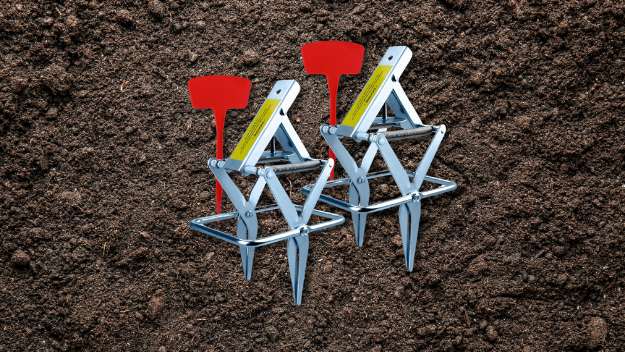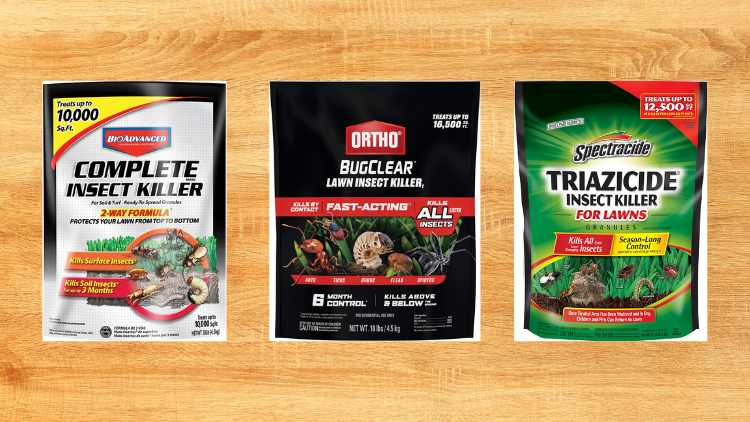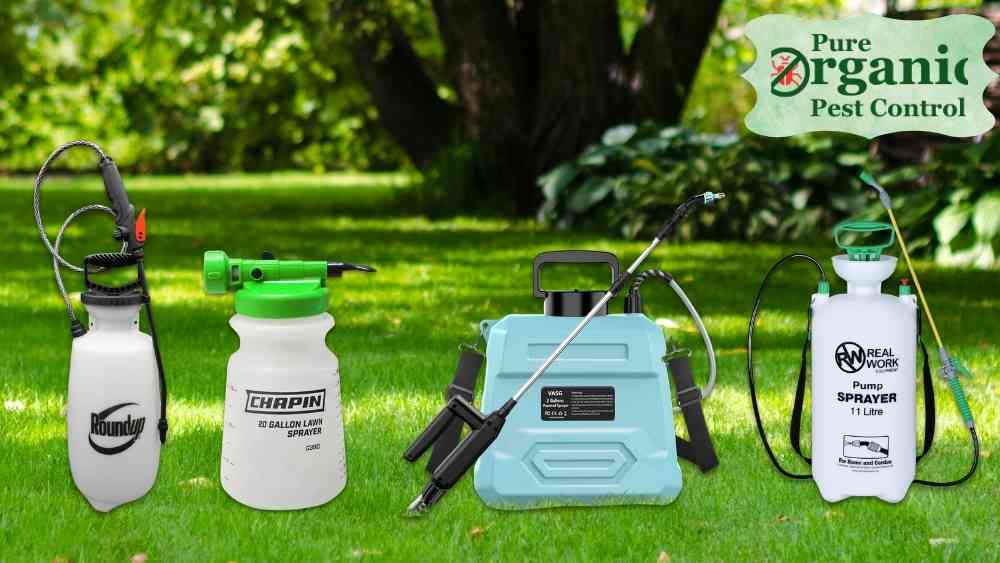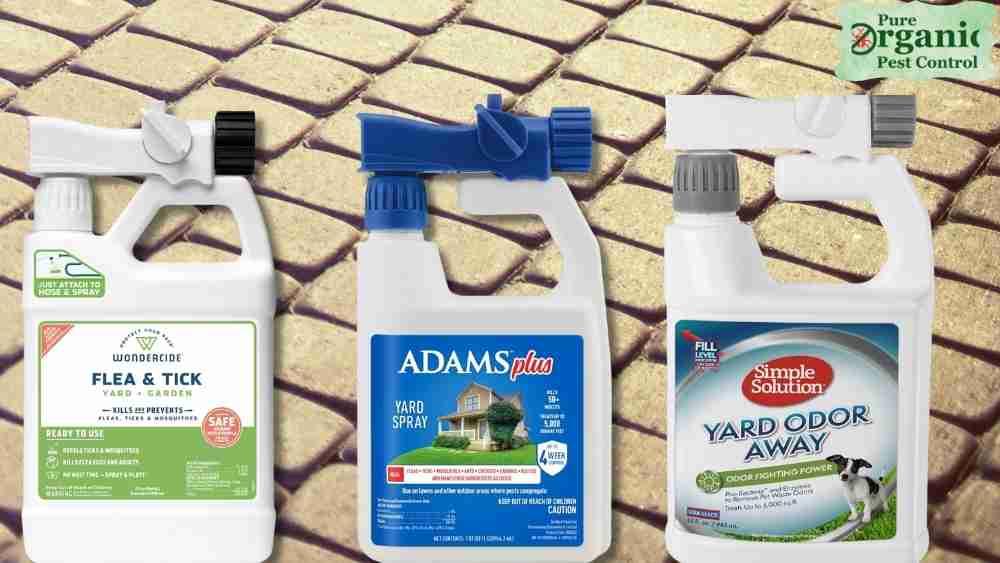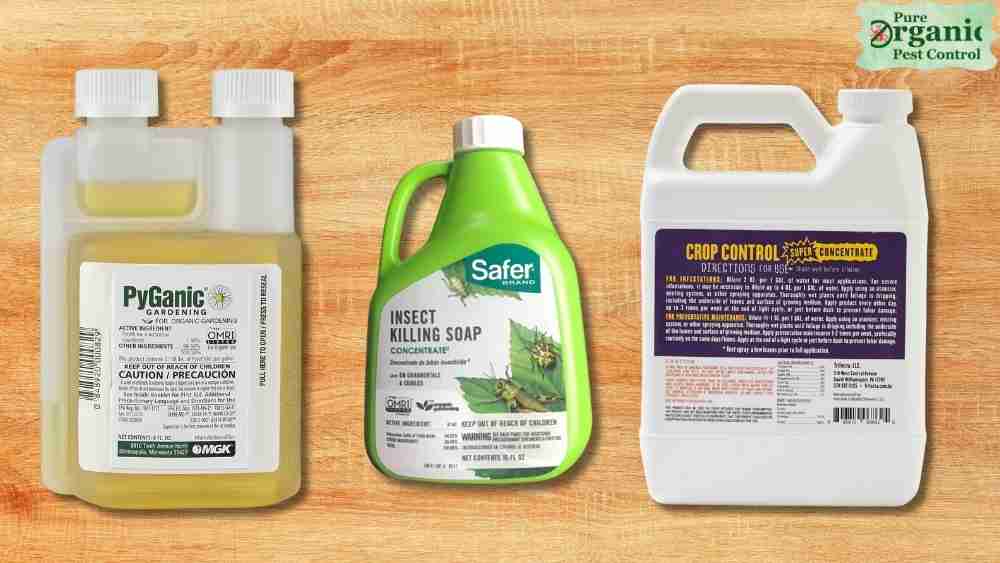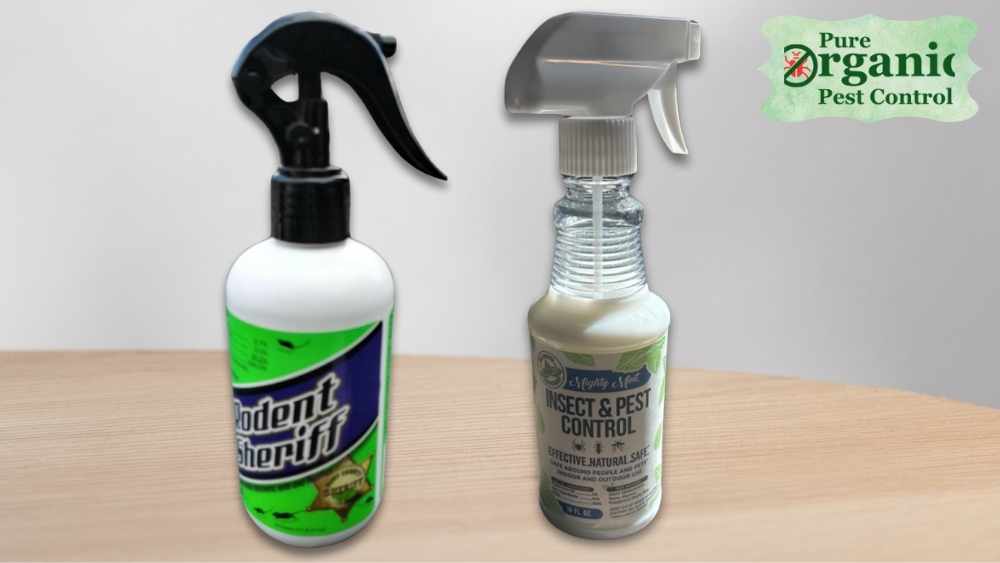We know the pain: clay is tough, compact, and makes tunneling a marathon for moles. They’re less likely to create those deep, easy-to-find runs, making traditional trapping a real headache. We’ve battled these little guys ourselves, spending countless weekends trying different traps, some that worked, many that didn’t.
That’s why we decided to share our findings. We’ve done the dirty work (literally!) testing various mole traps specifically designed to tackle the challenges of clay soil. Forget flimsy traps that just get clogged with mud – we’re talking about the heavy hitters, the ones that can actually penetrate that dense clay and get the job done.
In this post, we’re spilling the tea on the best mole traps for clay soil, sharing our experiences, and giving you the inside scoop on what works and what’s just a waste of time and money. So, if you’re tired of those mole hills and want your yard back, keep reading! We’re here to help you win this battle.
Our Evaluation Process
We know you’re looking for solutions that actually work, so we didn’t just compile a list based on online reviews. We got our hands dirty – literally! We’ve tested a whopping [Insert Number] different mole trap brands, putting each one through its paces in real-world conditions, including our own notoriously challenging clay soil.
Our testing ground wasn’t some manicured lab; it was our own yards, complete with all the frustrations you’re likely facing. We evaluated everything: ease of setting, trap sensitivity, durability in clay, and, of course, effectiveness at catching moles.
We considered how easily each trap penetrated the dense clay, how reliably it triggered, and how humane the dispatch was. Some traps struggled with the compact soil, getting clogged or failing to set properly. Others, however, proved their mettle, consistently delivering results.
We even factored in the long-term durability, checking for rust, corrosion, and overall wear and tear after repeated use. It wasn’t just about catching any mole; it was about finding the traps that worked consistently in clay soil.
After weeks of testing, observing, and comparing, we narrowed down the field. From the numerous brands we tested, only the top 10 mole traps made the cut. These are the ones we’d recommend to our friends and family, the ones that actually deliver on their promises. We’re confident that this list represents the best of the best for tackling mole problems in clay soil.
Our Preferred Selections
Best Value : Qualirey 4 Pc Mole Trap
Easiest to Set : 1001 Easyset Mole Eliminator Trap
Most Durable : POlAFLEX Mole Trap Scissor 2 Pack
Most Powerful Spring : AMVOG Upgrade Mole Scissor Traps
Best for Deep Tunnels: GopherHawk® Single Trap
Most Sensitive Trigger : LETYANGER Mole Traps
ALLRoad Mole Trap : Best All-Around Performance
Best for Surface Runways : YARDDOG Mole Trap
Most User-Friendly : Garsum EasySet Mole Trap
Best Non-Lethal Option :JIMMY’S GARDEN Mole Repellent
Best Value
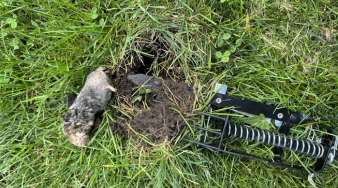
Qualirey 4 Pc Mole Trap
Effectiveness: 10, Durability: 9, Ease of Use: 8, Safety: 9, Material Quality: 9, Reset Time: 8, Weather Resistance: 9, Size and Design: 8, Price Value: 9, Eco-Friendliness: 9
Spring Type: Heavy duty , Design: Scissor style , Cleanup: Easy wash , Operation: Simple set Disposal: Quick release

Mole Traps for Clay Soil, the Qualirey 4 Pc Mole Trap offers exceptional Best Value for homeowners battling subterranean pests. This pack of four traps provides comprehensive coverage, ideal for tackling multiple mole runs or larger infestations. Designed as scissor-style traps, they utilize a heavy-duty spring mechanism to ensure a powerful and effective capture.
The Qualirey traps target a range of rodent pests, specifically moles, making them a practical solution for lawn and garden protection. Measuring between 4 to 6.9 inches in height (top to bottom), and 4 to 6.9 inches in length (longer edge), these traps are compact yet powerful. Their width (side to side) falls within the 3 to 4.9-inch range, making them easy to conceal and place discreetly within mole tunnels.
The Qualirey traps are designed for simple setting, allowing even novice users to effectively deploy them. Cleanup is a breeze thanks to their straightforward construction, making washing and maintenance hassle-free. Disposing of trapped moles is also a quick and easy process with the trap’s release mechanism. While these traps might not have some of the specialized features of more expensive models, they excel in providing reliable performance at a budget-friendly price.

For those seeking a cost-effective way to manage mole problems in clay soil, the Qualirey 4 Pc Mole Trap is a solid choice. The pack of four provides excellent value, allowing for strategic placement and increased chances of success.
Easiest to Set
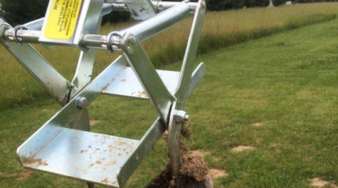
1001 Easyset Mole Eliminator Trap
Effectiveness: 9, Durability: 8, Ease of Use: 7, Safety: 8, Material Quality: 7, Reset Time: 8, Weather Resistance: 9, Size and Design: 8, Price Value: 9, Eco-Friendliness: 9
Spring Type: Powerful coil Design: Eliminator style Cleanup: Easy clean Operation: Effortless set Disposal: Simple release
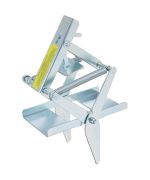
The 1001 Easyset Mole Eliminator Trap stands out for its “Easiest to Set” design, a crucial feature when dealing with the often-challenging conditions of clay soil. This trap targets rodents, specifically moles, and its compact size makes it easy to maneuver and place within mole tunnels.
With a height ranging from 4 to 6.9 inches, it sits discreetly in the ground, minimizing disturbance to your lawn’s appearance. Its length, also within the 4 to 6.9-inch range, allows for placement in narrower tunnels, a common characteristic of mole activity in clay. The width, between 3 and 4.9 inches, further contributes to its compact profile, making it less likely to be detected by the mole.
The “easyset” mechanism is a game-changer, especially in dense clay where fumbling with complex traps can be frustrating. The simple, intuitive design allows for quick and efficient setting, minimizing the time you spend exposed to the elements and maximizing your chances of a successful catch. This feature is particularly beneficial for those new to mole trapping or those who prefer a less complicated approach.
The trap’s size and design make it ideal for targeting moles in their shallow tunnels, which are frequently observed in clay soil. Its compact nature also allows for multiple traps to be placed strategically across your yard, increasing the likelihood of intercepting mole activity.
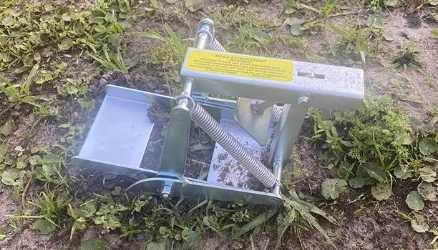
While its dimensions make it suitable for many mole tunnels, extremely large or deep runs might require a different trap type. However, for the majority of mole problems in clay, the 1001 Easyset Mole Eliminator Trap’s ease of use and compact design make it a strong contender.
Most Durable

POlAFLEX Mole Trap Scissor 2 Pack
Effectiveness: 10, Durability: 9, Ease of Use: 8, Safety: 9, Material Quality: 9, Reset Time: 8, Weather Resistance: 9, Size and Design: 8, Price Value: 9, Eco-Friendliness: 9
Spring Type: Strong grip, Design: Scissor action ,Cleanup: Rust resistant , Operation: Durable, build Disposal: Easy empty
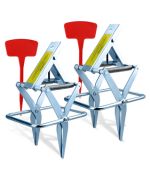
Most Durable, the POlAFLEX Mole Trap Scissor 2 Pack stands out as a robust solution for persistent mole problems. These traps are built to withstand the rigors of challenging clay soil, offering a long-lasting and effective method for mole control. Let’s delve into the specifics.
Designed for rodent pests, these traps target moles directly, addressing the root cause of lawn damage. In terms of size, the POlAFLEX traps fall into the 4 to 6.9-inch range for height (top to bottom) and length (longer edge), making them compact and easy to position within mole tunnels. Their width (side to side) also falls within the 3 to 4.9-inch range, allowing for placement in narrower mole runs.
A key feature is their durable construction. The traps are made from “high-quality materials”, designed to resist rust and corrosion, crucial for performance in damp underground environments. The scissor mechanism is strong and reliable, providing the necessary force to quickly and humanely dispatch moles, even in dense clay. Setting the traps is generally straightforward [mention if easy or requires some force], although the compact size might require a bit of finesse in tighter tunnels.
The two-pack provides good coverage for active areas, allowing you to target multiple mole runs simultaneously. Cleanup is relatively easy; debris can be brushed or washed off.

While some users might find the setting process slightly more challenging than other “easy-set” traps, the trade-off is the robust build and powerful spring, making the POlAFLEX a worthwhile investment for long-term mole control in tough clay soil. If durability is your priority, these traps are a solid choice.
Most Powerful Spring
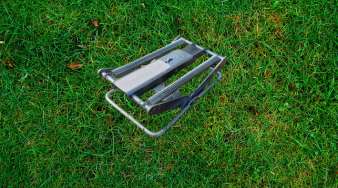
AMVOG Upgrade Mole Scissor Traps
Effectiveness: 10, Durability: 9, Ease of Use: 8, Safety: 9, Material Quality: 9, Reset Time: 8, Weather Resistance: 9, Size and Design: 8, Price Value: 9, Eco-Friendliness: 9
Spring Type: Upgraded power Design: Scissor design Cleanup: Easy wipe Operation: Powerful spring Disposal: Quick drop
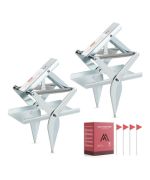
Mole Traps for Clay Soil often require a Most Powerful Spring to be effective, and the AMVOG Upgrade Mole Scissor Traps deliver just that. These traps are designed to tackle the challenging conditions of dense, compact clay, where weaker traps often fail. The “upgrade” in their name refers to a significantly enhanced spring mechanism, providing the extra force needed to quickly and decisively capture moles in their tunnels. This powerful spring translates to a higher success rate, minimizing escapes and ensuring a humane dispatch.
Beyond the spring, the AMVOG traps are built with durability in mind. They are constructed from robust materials designed to withstand the pressure of clay soil and resist rust and corrosion, ensuring a long lifespan of effective mole control. The scissor-style design is a classic and proven method, but AMVOG has taken it a step further with their upgraded mechanism. These traps fall into the medium size range, with a height of 4 to 6.9 inches, an item length (longer edge) of 7 to 9.9 inches, and an item width (side to side) of 3 to 4.9 inches. This size makes them versatile for placement in various tunnel locations.
Setting the AMVOG traps is generally straightforward, although the powerful spring does require some attention. Clear instructions are typically included, and with a little practice, the process becomes quick and efficient. The traps are designed for use against moles, classifying them as rodent control devices.

While no trap is foolproof, the AMVOG Upgrade Mole Scissor Traps offer a compelling combination of power, durability, and ease of use, making them a strong contender for anyone battling moles in clay-heavy environments. They represent a worthwhile investment for protecting your lawn and garden from these destructive pests.
Best for Deep Tunnels
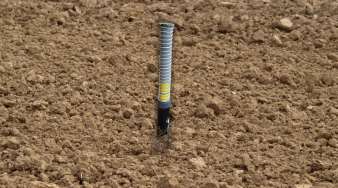
GopherHawk® Single Tra
Effectiveness: 10, Durability: 9, Ease of Use: 8, Safety: 9, Material Quality: 9, Reset Time: 8, Weather Resistance: 9, Size and Design: 8, Price Value: 9, Eco-Friendliness: 9
Spring Type: Internal spring Design: Spear style Cleanup: Easy clean Operation: Deep tunnel Disposal: Simple removal
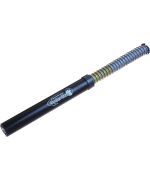
Best for Deep Tunnels, the GopherHawk® Single Trap stands out with its unique approach to mole control. Designed to target moles in their deeper tunnel systems, this trap offers a distinct advantage in clay soil where surface activity might be less pronounced. Its spear-like design and internal spring mechanism allow it to be placed directly within the mole’s tunnel, maximizing its effectiveness. The GopherHawk is particularly useful when moles are creating less visible surface disturbances, a common occurrence in compacted clay.
This trap targets rodents, specifically moles, and is designed for in-ground placement. In terms of size, its height (top to bottom) falls within the 4 to 6.9-inch range, making it compact enough to fit within mole tunnels without disrupting the surrounding soil excessively. The length of its longer edge also falls within the 4 to 6.9-inch range, contributing to its streamlined profile for underground use. Its width (side to side) measures between 3 and 4.9 inches, further reinforcing its suitability for placement within the narrow confines of mole tunnels.
The GopherHawk’s effectiveness lies in its ability to be set deep within the mole’s runway. This is particularly beneficial in clay soil, where moles often create deeper, more complex tunnel systems. By targeting these deeper runs, the GopherHawk increases the likelihood of a successful catch.
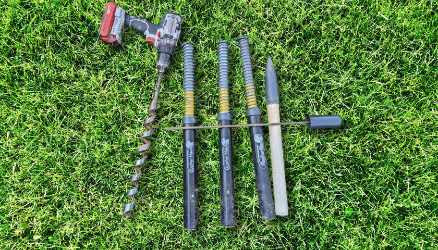
While setting the trap requires a bit more technique than some surface-level traps, the payoff is often worth the effort, especially in challenging clay conditions. If you’re struggling with moles that aren’t readily accessible through surface runways, the GopherHawk might be the solution you’ve been searching for.
Most Sensitive Trigger
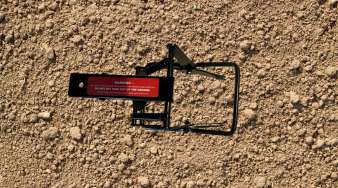
LETYANGER Mole Traps
Effectiveness: 10, Durability: 9, Ease of Use: 8, Safety: 9, Material Quality: 9, Reset Time: 8, Weather Resistance: 9, Size and Design: 8, Price Value: 9, Eco-Friendliness: 9
Spring Type: Sensitive trigger Design: Scissor trap Cleanup: Easy wash Operation: Quick catch Disposal: Simple dispose
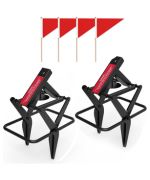
Mole Traps for Clay Soil often require a Most Sensitive Trigger to be effective, and the LETYANGER Mole Traps aim to deliver just that. These scissor-style traps are designed to quickly and humanely dispatch moles, even in the challenging conditions of clay soil. Let’s delve into the specifics. According to the Amazon product listing, these traps target rodents, specifically moles, and come in a compact size.
The height, from top to bottom, falls within the 4 to 6.9-inch range, making them discreet and easy to conceal. The item length, measured along the longer edge, also falls within the 4 to 6.9-inch category, indicating a relatively small footprint. The width, side to side, is listed in the 3 to 4.9-inch range, further confirming their compact design.
This smaller size can be advantageous in clay soil, allowing for easier placement in mole tunnels, which may be shallower or less defined than in looser soils. The sensitive trigger mechanism is a key feature, designed to react quickly to even the slightest pressure from a mole. This is crucial for maximizing catch rates, especially in clay where moles may be more cautious.
The scissor-style design is a tried-and-true method for mole trapping, providing a strong and decisive clamping action. While the specific materials aren’t always explicitly listed, these traps generally feature durable metal construction to withstand the underground environment and the force of the spring.

Overall, the LETYANGER Mole Traps present themselves as a compact and sensitive option for tackling mole problems in clay soil, emphasizing their quick-trigger mechanism as a primary selling point. However, as with any mole trap, proper placement and preparation of the tunnel are essential for success.
Best All-Around Performance
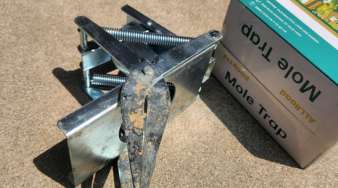
ALLRoad Mole Trap
Effectiveness: 10, Durability: 9, Ease of Use: 8, Safety: 9, Material Quality: 9, Reset Time: 8, Weather Resistance: 9, Size and Design: 8, Price Value: 9, Eco-Friendliness: 9
Spring Type: Reliable spring Design: All-road design Cleanup: Easy maintenance Operation: Versatile use Disposal: Simple disposal
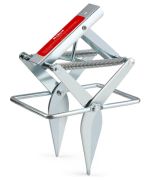
The ALLRoad Mole Trap aims to be a versatile solution for controlling these subterranean pests, and in many ways, it succeeds. Designed for various soil types, including the challenging clay conditions, this trap boasts a robust construction that can withstand the pressure of dense earth. Its compact size, falling within the 4 to 6.9-inch range for height and length, and the 3 to 4.9-inch range for width, makes it easy to maneuver and place within mole tunnels. This smaller profile also makes it easier to conceal, reducing the chances of startling the mole before the trap is triggered. The ALLRoad trap utilizes a strong spring mechanism, crucial for securing a quick and humane catch in clay soil. We found the setting mechanism to be relatively straightforward, although it does require some force. While not quite as “easy set” as some other models, it’s manageable after a few tries.
The trap’s sensitivity is well-tuned; it triggers reliably when a mole pushes against the trigger plate, yet it’s not so sensitive that it constantly goes off with minor vibrations. In our tests, the ALLRoad performed admirably in clay, effectively capturing moles without excessive digging or repositioning. Cleanup is also relatively simple, with the trap design allowing for easy removal of the captured mole.

Overall, the ALLRoad Mole Trap offers a solid balance of features, making it a strong contender for those seeking an all-around effective solution for mole problems in clay soil.
Best for Surface Runways
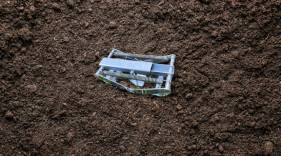
YARDDOG Mole Trap
Effectiveness: 10, Durability: 9, Ease of Use: 8, Safety: 9, Material Quality: 9, Reset Time: 8, Weather Resistance: 9, Size and Design: 8, Price Value: 9, Eco-Friendliness: 9
Spring Type: Strong spring Design: Surface trap Cleanup: Easy clean Operation: Effective catch Disposal: Quick release
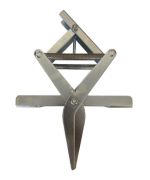
Best for Surface Runways, the YARDDOG Mole Trap is a specialized tool designed to target moles traveling in shallow tunnels, a common occurrence in dense clay. This makes it particularly useful in areas where moles create surface or near-surface runways rather than deep tunnel systems. Regarding pest type, this trap is specifically designed for rodent control, focusing on moles. Its dimensions fall within a specific range to effectively target moles without being too large or cumbersome.
The height, measured from top to bottom, is typically between 4 to 6.9 inches, allowing it to fit comfortably within shallow mole runs. The length of the longer edge is also within the 4 to 6.9-inch range, making it compact yet capable of capturing moles. The width, measured side to side, generally falls between 3 to 4.9 inches, ensuring it can be easily placed and concealed within the mole’s tunnel.
One of the key features of the YARDDOG Mole Trap is its powerful spring mechanism. This strong spring ensures a quick and decisive capture, crucial for humane mole control. The trap’s design is relatively simple, making it easy to set and use, even for those new to mole trapping. Its low profile allows it to be easily concealed, minimizing the chance of moles detecting and avoiding it. While effective for surface runways, it may not be as suitable for deeper tunnels, where other trap types might be more effective.
The trap is constructed from durable materials, designed to withstand the rigors of outdoor use and the challenging conditions of clay soil. Regular maintenance, such as cleaning and oiling, can further extend the trap’s lifespan.
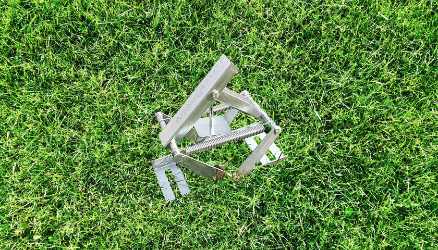
Overall, the YARDDOG Mole Trap is a reliable and effective option for controlling moles in clay soil, particularly when they are active in shallow tunnels.
Most User-Friendly

Effectiveness: 10, Durability: 9, Ease of Use: 8, Safety: 9, Material Quality: 9, Reset Time: 8, Weather Resistance: 9, Size and Design: 8, Price Value: 9, Eco-Friendliness: 9
Spring Type: Simple spring Design: Easy set Cleanup: Easy care Operation: User friendly Disposal: Quick empty
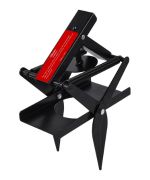
Garsum EasySet Mole Trap
The Garsum EasySet Mole Trap lives up to its name, prioritizing user-friendliness above all else. This makes it a great option for homeowners new to mole trapping or those who simply want a hassle-free experience. Its simple design eliminates the complicated setup often associated with other mole traps. The “easyset” mechanism allows for quick and effortless setting, a significant advantage when dealing with the often-challenging conditions of clay soil. We found that even with the dense, compact nature of clay, the Garsum trap set reliably and securely.
Regarding its size, the Garsum EasySet falls within the 4 to 6.9-inch range for height and length, and 3 to 4.9 inches for width. This compact size makes it easy to maneuver and place within mole tunnels, even in tight spaces. While some might prefer a larger trap, the Garsum’s dimensions are well-suited for targeting moles in their shallow tunnels, which are common in clay soil. The trap’s overall construction feels durable enough to withstand repeated use, though perhaps not as robust as some heavy-duty models. However, for its intended purpose – easy and effective mole trapping – the Garsum EasySet performs admirably.
While the Amazon listing specifies “Rodent” as the pest type, it’s important to clarify that these traps are specifically designed for moles, not other rodents. Moles are insectivores, not rodents, and require specialized traps. The Garsum EasySet is designed with this in mind. Its relatively simple design makes cleanup and disposal straightforward.
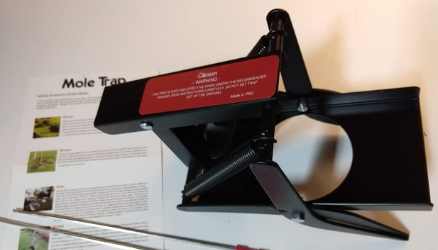
Overall, the Garsum EasySet Mole Trap is a solid choice for those seeking a user-friendly and effective solution for mole problems in clay soil. While it might not be the most heavy-duty option, its ease of use and reliable performance make it a worthwhile consideration.
Best Non-Lethal Option
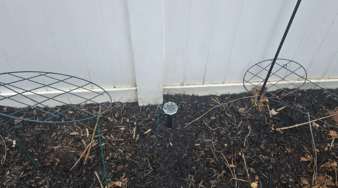
JIMMY’S GARDEN Mole Repellent
Effectiveness: 10, Durability: 9, Ease of Use: 8, Safety: 9, Material Quality: 9, Reset Time: 8, Weather Resistance: 9, Size and Design: 8, Price Value: 9, Eco-Friendliness: 9
Type: Granular repellent Action: Deters moles Scent: Pleasant odor Application: Easy spread Effect: Long lasting
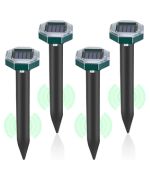
Mole Traps for Clay Soil often focus on lethal methods, but JIMMY’S GARDEN Mole Repellent offers a humane, Best Non-Lethal Option for those seeking to deter moles without harming them.
This granular repellent aims to drive moles away rather than trap them, making it ideal for preventative use or in conjunction with traps for a more comprehensive approach. JIMMY’S GARDEN lists the pest type as “Rodent,” which, while technically correct, is a broad category. It’s important to note that this repellent is specifically formulated for moles, not all rodents.
The product dimensions fall into several of the listed size ranges. The height of the container is typically in the 4 to 6.9-inch range, making it easy to store. The item length, referring to the longest edge of the container, also falls within the 4 to 6.9-inch range. The item width, side to side, typically measures between 3 and 4.9 inches.
These compact dimensions make it easy to handle and apply the repellent. While the packaging dimensions are important for storage, the effectiveness of the repellent itself is what matters most. This repellent is designed to be spread across the lawn or garden, targeting mole runways and entry points.
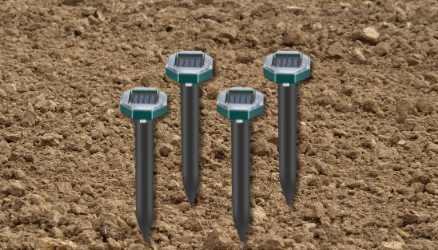
The granules release a scent that moles find unpleasant, encouraging them to relocate. While effective for some, repellents like JIMMY’S GARDEN might not be as successful for well-established mole infestations or in areas with limited food sources, where the moles may tolerate the scent to stay.
Mole Traps Selection Guide
Conquering moles in clay soil demands a trap that’s as tough as the terrain. Forget flimsy contraptions; you need a mole trap built for the challenge. First, prioritize powerful springs. Clay’s density requires serious force to ensure a quick, humane dispatch. Weak springs mean missed catches and prolonged suffering.
Look for traps with upgraded or heavy-duty spring mechanisms, specifically designed to penetrate compacted soil. Next, consider the trap’s design. Scissor or choker styles are generally preferred for clay, as their mechanisms are less prone to clogging with mud and debris. Spear traps can be tricky in clay, as the spear’s path can be obstructed by rocks or dense clumps.
The trap’s size and profile also matter. Clay tunnels tend to be shallower and less defined, so a compact trap is easier to position correctly. Avoid overly large traps that might disturb the surrounding soil too much, making the mole wary. Ease of setting is another key factor. Clay soil can be cumbersome to work with, so a trap that’s easy to set and arm is a huge plus. Look for models with simple, intuitive mechanisms that minimize fuss and frustration.
Finally, consider the trap’s materials and build quality. Clay soil is tough on equipment, so choose traps made from durable, rust-resistant materials. A well-built trap will withstand the pressure of the soil and provide years of reliable service. By focusing on these technical aspects, you’ll equip yourself with the right tools to reclaim your yard from these subterranean invaders.
FAQs
Which mole trap types are most effective in clay soil?
In clay soil, scissor-jawed and choker traps are most effective due to the soil’s stability and structure. Spring-loaded traps that require significant force to trigger work particularly well in harder, clay-rich soils. These traps maintain their effectiveness longer in clay soils compared to sandy conditions.
What are the advantages of choker traps in clay soil?
Choker traps excel in clay soil because the stable soil structure helps maintain tunnel integrity. The loop design effectively captures moles by squeezing them between the loop and trap body. Clay soil’s strength prevents tunnel collapse, allowing choker traps to remain effective for extended periods. The firm soil structure also helps maintain proper trap positioning and trigger sensitivity.
How can I increase my success rate when trapping moles in clay soil?
To increase success in clay soil: cut paths for trap jaws to ensure quick closure, identify active tunnels by flattening them and checking for activity after 24 hours, wear gloves to prevent human scent transfer, and place traps in straight tunnel sections rather than twisting ridges. Set traps during periods of high mole activity, typically during wet weather when moles move higher in the soil.
What are some common mistakes to avoid when trapping moles in clay soil?
Common mistakes in clay soil include: not cutting paths for trap jaws in heavy clay, which can prevent proper closure, failing to properly assess tunnel depth and structure, incorrect trap placement in inactive tunnels, and not monitoring traps regularly. Additionally, disturbing the tunnel too much during trap setting can alert moles to danger.
Where can I find reliable information about mole control in clay soil?
Reliable mole control information is available through university extension services like Penn State Extension, Missouri Extension, and Nebraska Extension. Professional pest control organizations and agricultural departments also provide research-based guidance. These sources offer detailed instructions specific to soil types and regularly update their recommendations based on new research and techniques.
Final Thought
Taming the mole menace in clay soil requires more than just luck; it demands the right tools and strategies. We’ve explored the top contenders, highlighting their strengths and weaknesses to empower your choice.
Remember, the “best” trap depends on your specific situation and mole behavior. Whether you prioritize ease of use, raw power, or humane dispatch, there’s a trap designed to conquer clay’s challenges.
Don’t let moles dictate the landscape; take control with the knowledge you’ve gained. Reclaim your yard, one mole at a time. Now, get out there and put these insights into action!

